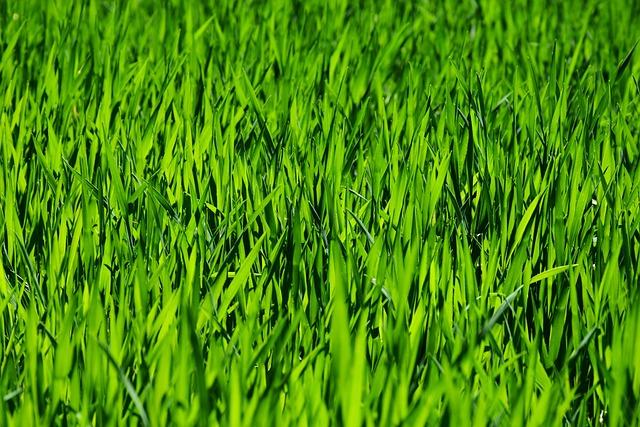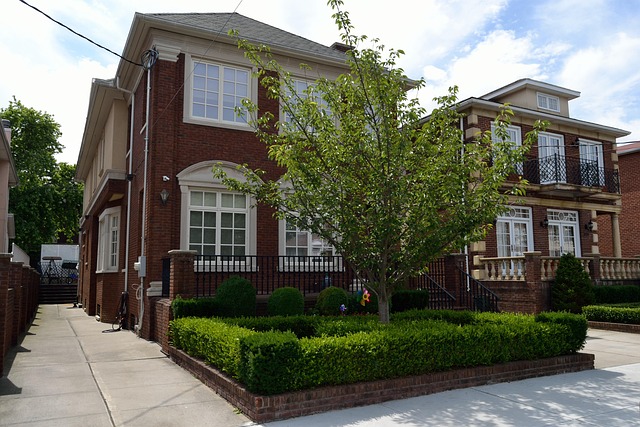Lawn care and landscaping transform outdoor spaces into stunning, inviting environments. Proper lawn care involves nurturing grass through fertilizing and deep watering, while strategic landscaping places plants for visual appeal and functional benefits like privacy and shade. A well-cared-for lawn offers a safe play area, and sustainable practices like aeration reduce water needs. Beginners can create healthy yards by understanding grass types, regular mowing, deep watering less frequently, annual fertilization, weed control, pest monitoring, raking, and seasonal adjustments. Following these lawn care and landscaping guidelines leads to beautiful, thriving outdoor spaces.
In today’s era of urban expansion, transforming residential outdoor spaces into vibrant oases is more important than ever. From lush lawns that define community to meticulously designed landscapes reflecting personal style, these areas have evolved beyond mere greenery. This article explores the art of lawn care and landscaping, offering insights on nurturing your yard while enhancing its aesthetic appeal. We’ll guide you through setting the stage with powerful lawn care practices, choosing suitable grass types, and integrating outdoor living spaces that cater to your lifestyle. Additionally, we delve into sustainable strategies for future-proofing your yard, ensuring a harmonious balance between beauty and environmental responsibility.
- The Power of Lawn Care: Setting the Stage
- – The role of a well-maintained lawn
- – Basic lawn care practices for beginners
The Power of Lawn Care: Setting the Stage

The outdoor space surrounding a home is a blank canvas, and proper lawn care and landscaping can transform it into a stunning and inviting environment. Lawn care isn’t just about keeping grass green; it involves a meticulous process of nurturing and maintenance that sets the stage for beautiful landscapes. From mowing and fertilizing to weeding and irrigation, each step contributes to creating a thriving outdoor oasis.
Landscaping, when combined with effective lawn care, takes this transformation to another level. Strategically placing plants, trees, and shrubs not only adds visual appeal but also provides functional benefits. Well-designed landscaping enhances privacy, creates natural shade, and offers a space for relaxation and entertainment. It can turn an ordinary backyard into a vibrant garden or a serene retreat, all while maintaining the overall health and aesthetics of the lawn.
– The role of a well-maintained lawn

A lush, green lawn is more than just an aesthetic addition to a residential outdoor space; it’s a cornerstone of well-maintained landscaping. Lawn care goes beyond occasional mowing, involving regular fertilizing and watering practices that nourish the grass, ensuring it remains vibrant and healthy. A healthy lawn not only enhances the curb appeal of a property but also provides a soft, natural playing area for families and pets.
Landscaping professionals emphasize that proper lawn care is integral to creating inviting outdoor environments. By incorporating strategic mowing patterns, edge trimming, and occasional aeration, lawns can be transformed into low-maintenance oases that require less watering and foster a balanced ecosystem. These practices not only contribute to environmental sustainability but also ensure that outdoor spaces remain inviting and comfortable for residents to enjoy throughout the year.
– Basic lawn care practices for beginners

For those new to lawn care and landscaping, establishing a healthy outdoor space might seem daunting. However, with some basic practices, anyone can transform their yard into a lush oasis. Start by understanding your grass type; different species require unique care. Regular mowing is essential, keeping blades at a height suitable for the variety—usually around 2-3 inches. This promotes thick growth and discourages weeds. Watering deeply but less frequently is ideal; morning or evening sessions are best to minimize evaporation. Fertilization once or twice a year helps maintain vibrancy, but be mindful of over-application.
Weed control is crucial; manual removal or eco-friendly products are safer for the environment and your family. Pests can also damage lawns; watch for signs like patches of brown grass and consider natural or chemical treatments if necessary. Regular raking helps remove thatch buildup, allowing nutrients to reach the roots. And don’t forget seasonal adjustments—spring and fall bring unique care needs. Following these lawn care and landscaping guidelines will lay a solid foundation for a beautiful, thriving outdoor space.
Transforming your residential outdoor space starts with recognizing the power of lawn care. A lush, well-cared-for lawn sets the stage for a beautiful and inviting landscape. By adopting simple yet effective lawn care practices, you can enhance your property’s curb appeal and create a serene environment that invites relaxation and entertainment. Incorporate these techniques into your routine to unlock the full potential of your outdoor space.



